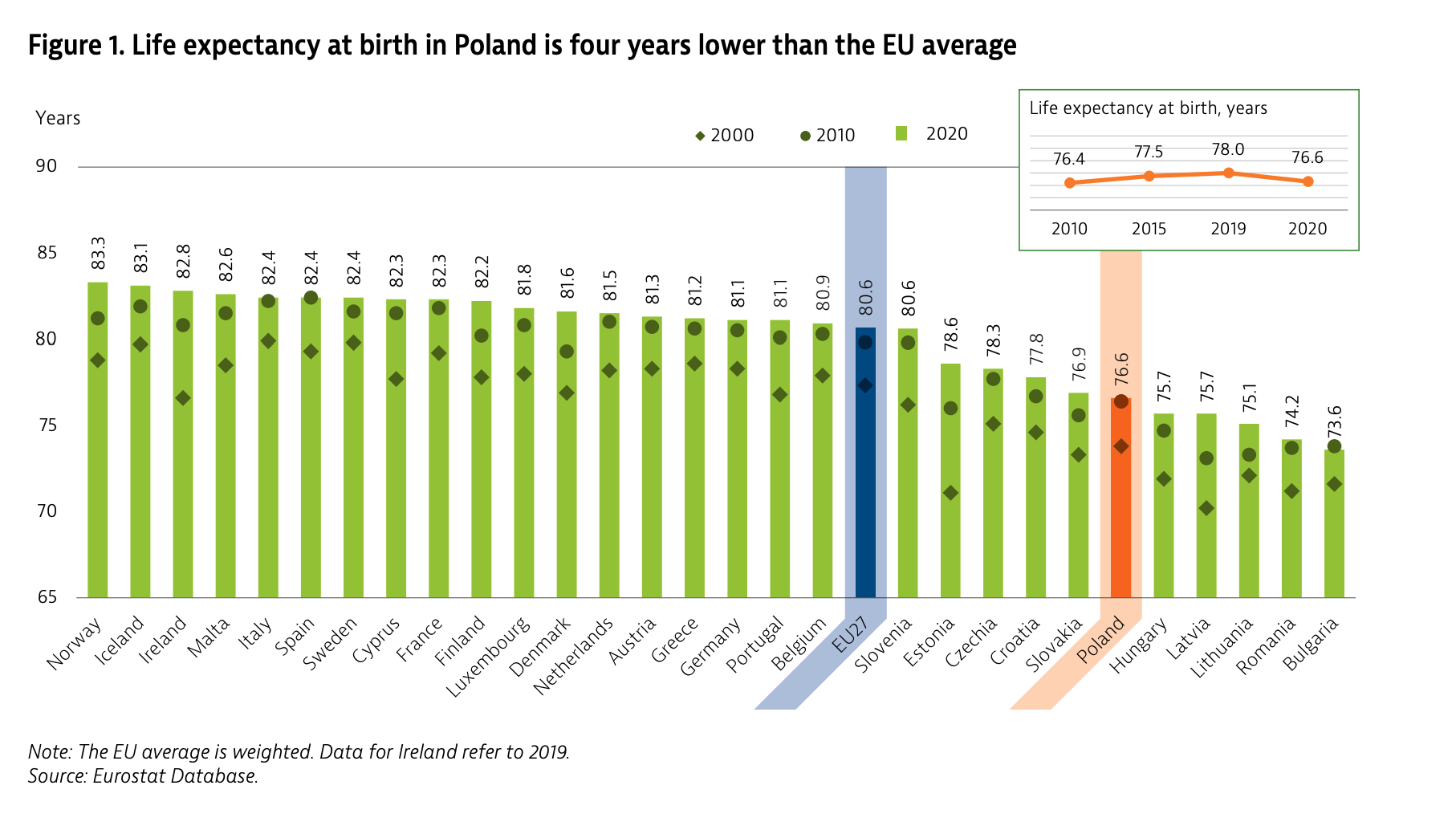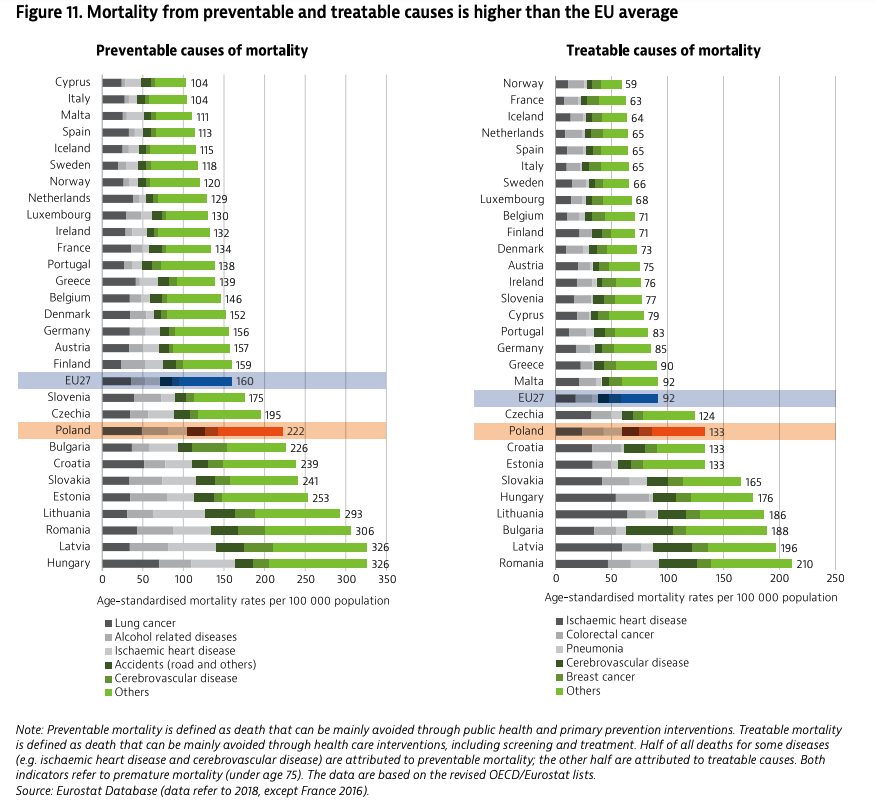Average life expectancy in Poland dropped 1.4 years in 2020 compared to 2019 amid the coronavirus pandemic, according to a new report by the OECD in conjunction with the European Commission.
That was one of the largest drops in the European Union, and double the 0.7 years fall across the whole bloc. The report pins the life expectancy change in Poland on low healthcare funding, medical staff shortages and problems with access to care.
It notes that Poland spends less than half the EU average on healthcare and has by far the bloc’s lowest number of doctors and one of the lowest numbers of nurses in proportion to population.

Source: OECD report
Prior to the pandemic, between 2000 and 2014 Poland’s life expectancy at birth increased by more than four years, reaching 78 years. It remained around that level until 2019.
In 2020 it dropped to 76.6 years as a result of the high level of excess deaths during the pandemic. Previous data from Eurostat showed that Poland had the EU’s highest excess death rate last year.
The reduction in life expectancy by almost 17 months was one of the EU’s largest recorded drops and widened the gap in life expectancy between Poland and the bloc’s average to four years.
In 2020, COVID-19 officially accounted for 6% of deaths in Poland. However, the report notes that the actual number is likely to be higher, as well as highlighting that many deaths were caused indirectly by COVID-19 due to limited access to healthcare during the pandemic.
The rate of teleconsultations during the first 12 months of the pandemic stood at 62% of the population in Poland, compared with 39% across all 27 EU countries, finds the OECD report. The proportion of people who forwent medical care in that period, 28%, was also higher than the EU figure of 21%.
The effectiveness of the healthcare system is also below EU standards. According to 2018 data, 222 of 100,000 people died of preventable causes and 133 of treatable ones in Poland, compared with 160 and 92 respectively across the EU. Cancer survival rates remain “relatively low” despite an improvement.

Source: OECD report
To make matters worse, Poland has consistently been among the lowest spenders on healthcare in the EU – at 6.5% of GDP, compared with the EU average of 9.9% in 2019. In 2020, the government injected an additional 7.5 billion zloty (€1.7 billion) to boost the pandemic response.
The report also notes that a high level of fragmentation of Poland’s health system governance has made effective coordination of activities more difficult, but that recent efforts have sought to improve the situation.

The health system is likewise “affected by imbalances in the provision of services” with a skew towards hospitals, where there are 6.2 beds per 1,000 people in 2019 against the EU’s average of 5.3. There is also “insufficient” outpatient care, diagnostics and long-term care.
Meanwhile, Poland has the lowest number of practising doctors in relation to population (2.4 per 1,000) in the EU as well as one of the lowest numbers of nurses (5.1).

All charts: OECD report
Main image credit: Jakub Orzechowski / Agencja Gazeta

Maria Wilczek is deputy editor of Notes from Poland. She is a regular writer for The Times, The Economist and Al Jazeera English, and has also featured in Foreign Policy, Politico Europe, The Spectator and Gazeta Wyborcza.




















